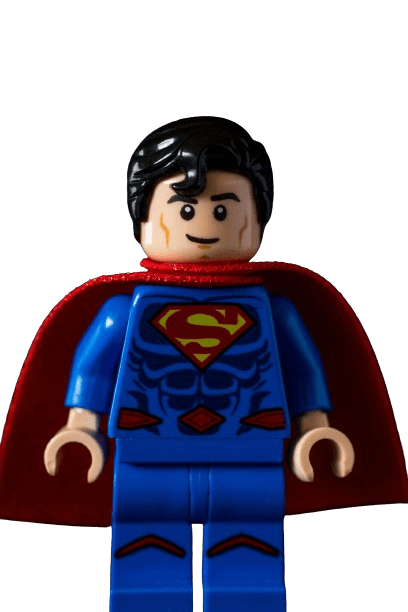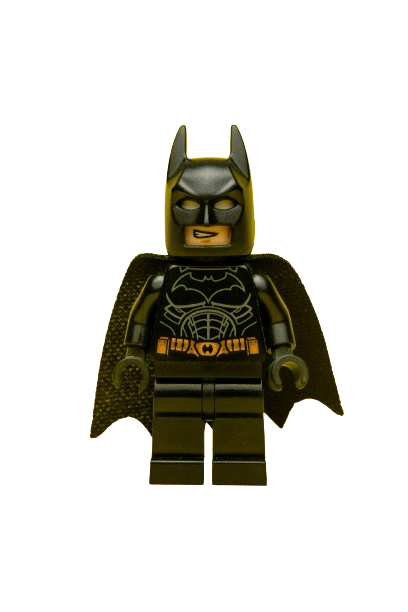- 20 January 2024
- No Comment
- 4998
From Crisis to Triumph: LEGO’s Business Turnaround Story

Around twenty years ago, LEGO faced a critical moment when Jørgen Vig Knudstorp, the Head of Strategic Development, delivered a stark assessment.
In simple terms, he essentially said, “We’re in trouble—losing money, dealing with negative cash flow, and facing a serious risk of debt default that could lead to the company falling apart.”
Knudstorp spent six months scrutinizing the company and discovered a significant issue: a lack of profitable innovation.
According to David C. Robertson, the author of ‘Brick by Brick: How LEGO Rewrote The Rules Of Innovation And Conquered The Global Toy Industry,’ LEGO had expanded its product range, but its financial health was suffering. The company had introduced numerous new products, but only a handful were actually making money.
To make matters worse, the management organization and systems at LEGO, which had been shaped by decades of success, were ill-prepared to handle a downturn.
In essence, LEGO had become creatively rich in product offerings but financially anemic at the bottom line. This was a critical moment that set the stage for LEGO’s transformation and its journey to rewrite the rules of innovation in the global toy industry.
LEGO found itself in a dire situation due to a lack of collaboration within its management team.
The twelve senior vice presidents responsible for overseeing various functions and market regions operated in isolated silos.
This lack of coordination led to a forecasted thirty percent drop in sales, totaling £193 million in operating costs, and a negative cash flow exceeding £124 million.
The company was on the brink of defaulting on its substantial debt of nearly £620 million, with projected net losses doubling in the following year.
The gravity of the situation shouldn’t have been a surprise, considering the alarming trend at LEGO HQ Denmark.
From 1932 to 1998, the company never incurred losses, but starting in 1998, losses steadily increased each year.
By 2003, the year of Jørgen Vig Knudstorp’s candid assessment, the situation had become deeply concerning.
Things took a turn for the worse a year later when LEGO experienced its largest-ever loss, approximately £217 million.
Krudstorp, who had been appointed CEO by then, described the challenging scenario, stating that in 2003, they lost nearly 30 percent of their turnover in one year.
In 2004, there was an additional 10 percent decline in turnover. Within one year of Knudstorp taking charge, the company had lost 40 percent of its sales.
Facing record losses and negative cash flows, the priority became how to stop the bleeding.
Knudstorp, drawing on his experience as a former McKinsey analyst, likened the situation to a dress rehearsal of the world financial crisis—sharp declines in sales and a substantial increase in indebtedness.
Stabilizing sales and implementing drastic cost-cutting measures became imperative to address the new reality of selling 40 percent less than just two years earlier.
Excess capacity and stock in the wrong locations further complicated matters, leaving retailers discontent. The challenge at hand was formidable, and decisive actions were required to navigate through the crisis.
LEGO’s significant losses were, in part, a consequence of its late 1990s attempt to diversify.
Fearing a decline in the appeal of its iconic building bricks due to the rising popularity of computer games and the internet, the company sought new avenues.
However, this move coincided with increased competition from other toy manufacturers, as LEGO’s plastic toy brick design patents had expired in 1988, ending its longstanding monopoly in the market.
In an effort to enhance the LEGO brand’s visibility, the company expanded its ownership of theme parks, despite having little expertise in the hospitality industry. Regrettably, these capital-intensive ventures did not yield the anticipated returns.
Additionally, LEGO substantially increased its product portfolio, tripling the number of new toys produced from 1994 to 1998.
The company faced challenges in determining which products were profitable and which ones failed to generate sufficient returns on the substantial tooling investments.
The Turnaround
The turnaround for LEGO began with Jørgen Vig Knudstorp, along with Finance Director Jesper Ovesen, making significant and decisive changes. Ovesen, a former Chief Financial Officer of Danske Bank, identified a critical gap in financial analysis within the company.
While there were profit and loss accounts by country, there was a lack of product and line profitability analysis.
Essentially, LEGO didn’t know where they were making or losing money, including the massive cash drain from the theme parks.
Opting for a short-term life-saving action plan rather than a long-term strategy, Knudstorp and Ovesen implemented key measures:
- Ovesen introduced a measurable goal of a 13.5% return on sales benchmark. The Consumer Product Profitability system was established to track the return on sales for individual products and markets, enabling the company to identify profitable and unprofitable areas.
- A significant part of the plan involved cutting costs, including reducing the workforce by 1,000 jobs.
- Many processes were outsourced, allowing for a further reduction of 3,500 employees.
- Prioritizing cash over sales growth, the team focused on managing cash flow effectively.
- The introduction of performance-related pay motivated employees to contribute to the company’s recovery.
- Streamlining operations, the company worked on reducing the time it took to bring products to market.
- The decision to sell theme parks and slow down retail expansion contributed to refocusing on core business priorities.
- The number of components was significantly reduced from almost 7,000 to about 3,000, streamlining manufacturing and distribution.
As a result of these strategic moves, LEGO not only recovered from its financial crisis but emerged as the most profitable and fastest-growing toy company globally.
During the challenging recession years from 2007 to 2011, LEGO’s pre-tax profits quadrupled, outpacing even industry giants like Apple from 2008 to 2010.
This remarkable turnaround showcased the effectiveness of the comprehensive changes implemented by Knudstorp and his team.
LEGO’s success story has not only endured but reached new heights. Under the leadership of Bali Padda, who took over from Jørgen Vig Knudstorp as the brand’s global expansion head, LEGO celebrated its highest-ever revenues in its recent years of 90-year history.
In a remarkable achievement, LEGO surpassed iconic brands like Ferrari and Apple to claim the title of the world’s most powerful brand, according to Brand Finance, a renowned brand valuation and strategy consultancy.
Each year, Brand Finance assesses thousands of top brands globally to identify the most powerful and valuable, and in recent evaluations, LEGO emerged victorious.
emerged victorious.
Brand Finance declared, “LEGO is the world’s most powerful toy brand,” citing high scores on various measures in their Brand Strength Index, including familiarity, loyalty, staff satisfaction, and corporate reputation.
According to Brand Finance, the Danish toy company Lego is the world’s most valuable toy brand for the ninth year in a row.
In 2023, Lego’s brand value was over $7.4 billion, which is more than four times the value of the next most valuable brand, Bandai Namco.
In 2022, Lego’s brand value was around $11.8 billion, compared to about $5.4 billion in 2015. Lego’s innovative business model has allowed its brand value to surpass its competitors in the toy industry.
The company’s unique ability to appeal to both children and adults in today’s tech-centric world garnered particular praise.
The success was further amplified by the critical and commercial triumph of “The LEGO Movie,” which grossed nearly $500 million, The movie also made an estimated $111,3 million from domestic video sales.
This cinematic achievement played a crucial role in elevating LEGO from being a well-loved, strong brand to the pinnacle of the world’s most powerful brands.
This remarkable turnaround demonstrates that even in the face of imminent disaster, a company can be revitalized. Having a top-level financial advisor, such as Bali Padda, guiding strategic changes undoubtedly played a crucial role in LEGO’s resurgence and transformation into a global super-brand.
Insights From Nabeel Shaikh
As a seasoned chartered accountant and management consultant, providing advice on managing negative cash flow issues, it’s essential to address the specific challenges a company like LEGO faced during its financial crisis. Drawing lessons from LEGO’s successful turnaround, here are some expert recommendations:
Thorough Cash Flow Analysis:
Begin by conducting a detailed analysis of your company’s cash flow. Identify the specific areas where cash is flowing out more rapidly than it’s coming in. Examine the entire cash conversion cycle, from receivables to payables, and understand the cash flow dynamics of each operational aspect.
Implement a Consumer Product Profitability System:
LEGO’s success involved the introduction of a Consumer Product Profitability system. Consider implementing a similar system to measure the return on sales for individual products and markets. This will enable you to identify profitable and unprofitable product lines, helping you make informed decisions about where to allocate resources.
Set Clear Financial Targets:
Establish measurable and achievable financial targets. This provides a roadmap for your company to work towards, ensuring that everyone is aligned with the goal of improving cash flow. In LEGO’s case, they set a specific return on sales benchmark, which played a crucial role in their recovery.
Cost-Cutting Measures:
Identify areas where costs can be reduced without compromising essential operations. LEGO made significant cost-cutting decisions, including workforce reductions and outsourcing processes. However, these cuts were strategic and aimed at improving overall efficiency.
Efficient Processes and Automation:
Streamline processes to enhance efficiency. Invest in automation tools to expedite invoicing, collections, and payment processes. This not only accelerates cash inflows but also reduces the risk of errors associated with manual tasks.
Negotiate Payment Terms and Inventory Management:
Negotiate favorable payment terms with suppliers and optimize inventory management. LEGO addressed these aspects to improve its cash position. Negotiating extended payment terms can provide your company with breathing room, especially during challenging periods.
Proactive Cash Flow Management:
Adopt a proactive approach to cash flow management. Regularly review and forecast cash flows, identifying potential issues before they escalate. This ensures that corrective actions can be taken in a timely manner.
Explore Financing Options:
Consider financing options to inject liquidity into the business. LEGO successfully navigated its crisis by exploring various financing avenues, including loans and lines of credit. Evaluate the feasibility of securing additional funding to bridge temporary cash flow gaps.
Transparent Communication:
Maintain transparent communication with key stakeholders, including employees, suppliers, and customers. Keeping everyone informed about the company’s financial health fosters understanding and support during challenging times.
Continuous Monitoring and Adaptation:
Continuously monitor the effectiveness of implemented strategies and be prepared to adapt. LEGO’s success was not a one-time fix but an ongoing process of monitoring, adjusting, and refining its approach to cash flow management.
Businesses can address negative cash flow issues strategically, much like LEGO did during its remarkable turnaround. Each of these measures contributes to a comprehensive and sustainable approach to managing cash flow challenges.
LEGO’s successful turnaround highlights the importance of thorough analysis, tailored strategies, and ongoing adaptation. Seeking professional advice when needed and staying proactive in addressing potential challenges can ensure financial health and pave the way for sustainable success.


